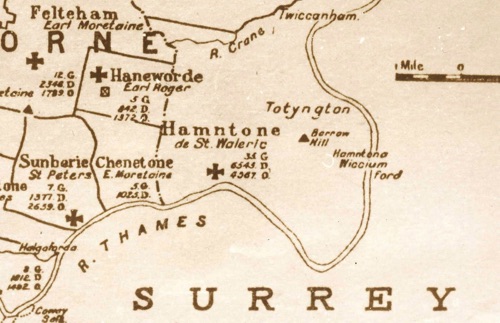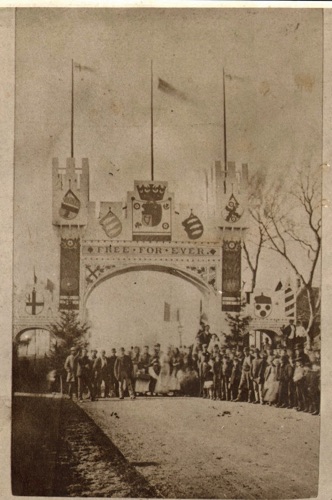The Bridge
Throughout its history Hampton Wick’s importance was largely due to the ability to cross the river here, initially by a ford, from the thirteenth century by a wooden bridge and from 1828 by a stone bridge. For long, the bridge was the only bridge between London Bridge and Staines.
(Click to get a larger image)

This extract from the Domesday Map of 1086 marks the ford that provided a river crossing between the Manor of Hampton Court and the important town of Kingston upon Thames from pre-Roman times.







